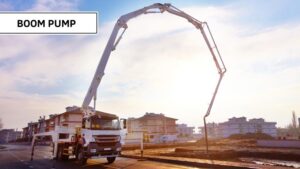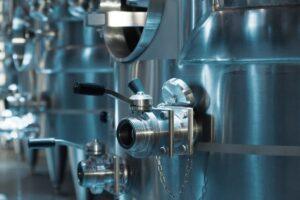
Oil and gas production has long been the backbone of world energy supply, feeding industries, transportation, and households globally. However, with increased emphasis on renewable sources, fossil fuels still make up the lion’s share of the world’s energy needs. Recent technological advancements have opened access to previously unreachable reserves and significantly improved production efficiency. Yet with these innovations come new challenges: environmental concerns, fluctuating market prices, and increased regulatory pressure.
As the world’s energy demand continues to increase, it is important to understand modern methods of oil refining and gas extraction, the challenges faced by the industry, and the economic implications of its production to frame the future of energy. This article outlines the role of oil and gas production in the current energy scene, discussing recent technological innovations, industry obstacles, and economic factors influencing the future shape of the sector.
Process of Oil and Gas Production
Oil and gas production is a complex process entailing three main stages of operation: upstream, midstream, and downstream. Each stage in this chain plays a crucial role in the journey from Earth to consumer, while all are subject to different technological, regulatory, and economic challenges. Understanding how these different stages work and how they are regulated can help paint a clearer picture of the oil and gas industry’s complexity.

Upstream: Exploration and Extraction
The upstream sector is tasked with the exploration and extraction of crude oil and natural gas from fields. Exploration involves the location of a possible deposit of oil and gas through ground surveys and seismic studies. Once located, operations start to drill for deposits both onshore and offshore. This phase also includes secondary recovery methods, such as water or gas injection into the reservoir for maximum extraction of resources. Technological advancements in hydraulic fracturing and horizontal drilling have enabled companies to access reserves that were previously unreachable, increasing production levels significantly.
Regulations in the upstream sector vary greatly depending on the country. For instance, the EPA and BSEE regulate a drilling process in the U.S. for environmental protection and safety, while international institutions such as the IMO set guidelines to ensure standardization and safety for offshore drilling. Adherence to these regulations is very important in preventing environmental disasters and securing the safety of workers and surrounding communities.
Midstream: Transportation and Storage
Once extracted, oil and gas move into midstream, which includes all transportation and storage of oil and gas. Crude oil and natural gas move from extraction sites on their way to refineries and storage facilities. Pipelines are the most common transportation method, though railways, trucks, and tankers are also used to carry certain types of transport. After transportation, the oil or gas is stored at terminals or tank farms before being further processed. Advanced pipeline technologies, including leak detection systems, and the use of LNG terminals to transport gas have helped make midstream operations much safer and more efficient.
The regulatory framework concerning midstream activities is drawn from both local and international levels. For instance, in the United States, the Pipeline and Hazardous Materials Safety Administration imposes standards for pipeline safety; the transportation of oil by sea is subject to various international shipping rules through the IMO. Adhering to such regulations helps avert spills, accidents, and other environmental issues throughout transportation. Moreover, environmental regulations are concerned with the control of emissions and proper maintenance of the infrastructure used in these processes.
Downstream: Refining, Distribution, and Marketing
The downstream sector is the final stage of the oil and gas production process, whereby crude oil is refined into usable products such as gasoline, diesel, and jet fuel. Commonly, refineries apply various separation processes such as distillation, cracking, and reforming on crude to convert its various components into consumer products. Refined products are thereafter sent to the distribution of petroleum products network down to the retail outlets, namely filling stations. The downstream sector also covers the supply and trading of such products in terms of branding and establishing retail networks by international oil gas producers association to achieve availability everywhere.
In the downstream sector, regulations for oil & gas industry operations and markets are generally geared toward environmental impacts, specifically air and water quality. For example, refineries have strict emissions regulations in many countries, such as the Clean Air Act in the U.S. and various European Union directives on emissions. On an international scale, the refining process is also regulated by standards set by organizations like the International Labour Organization (ILO) and the European Union’s REACH program. These regulations are put in place to ensure public health, job safety, and environmental exposure from the refining process.
Regulatory Compliance and Global Coordination
Oil and gas production is a heavily regulated process. Every stage has regulations. In many cases, local regulations are based on national priorities and laws. International agreements and organizations offer some sense of consistency across country borders. For instance, the IEA and the World Bank work to enhance energy security and sustainability in the industry. Observation of both local and international regulations helps to reduce environmental risks and ensures the safety of employees, while guaranteeing security of supply. As the industry continues to evolve, adherence to these standards will be crucial in the balancing act between energy demand and environmental and human health protection.

Oil and Gas Production Equipment
The pumps, compressors, motors, and generators are important in the oil and gas industry for smooth and safe operations. These tools span the extraction, transportation, and refining process and help maintain efficiency levels to meet safety standards.
Pumps
Pump services are very important in transferring crude oil and natural gas through pipelines. In the upstream segment, pumps are used to inject water or gas for the purpose of secondary recovery. In midstream, they help to transfer oil and petroleum products through pipelines from the extraction points to refineries. Reliability is a vital issue to avoid failures that could result in expensive downtime or environmental hazards.
Compressors
Compressors are essential in transporting natural gas. By increasing gas pressure, compressors enable efficient flow through pipelines over long distances. They are also used in refining processes to maintain pressure levels. Regular maintenance is critical to prevent leaks or system failures.
Motors
Motors power such equipment as pumps, compressors, and drilling rigs. In both the upstream and refining stages, motors are crucial for machinery. As automation increases, motors may come equipped with sophisticated controlling systems for accuracy and safety. Regular inspection is necessary to get the best out of motors and to avoid costly production interruptions.
Generators
Generators provide backup power for continuous operations in remote locations or during power outages. In particular, they are very important for oil rigs and offshore platforms, where reliability is paramount. Regular servicing ensures that they work reliably under difficult conditions.
In other words, pumps, compressors, motor services, and generators all make oil and gas production efficient, non-hazardous, and safe. The maintenance of such devices is very instrumental in accident prevention and risk mitigation while sustaining continuity in production.
Artificial Intelligence in Oil and Gas Production
Artificial Intelligence is now changing the face of the oil and gas industry by bringing efficiency, safety, and cost-cutting into play. With advanced data analytics, AI helps in optimizing operations, predicting equipment failure, and enhancing overall production processes.
Operation Optimization
AI does data analysis from sensors and logging equipment for patterns that optimize production. For instance, it can suggest the best parameters of drilling or methods of fluid injection to increase efficiency with less waste. Making changes in real-time, AI ensures more effective extraction of resources.
Improving Safety
AI improves safety by predicting the possibility of an accident. Monitoring equipment performance, by understanding data like vibration, pressure, or temperature, AI identifies early signs of failure and allows for appropriate maintenance in due time to prevent accidents or breakdowns.
Predicting Equipment Failures
Through the use of real-time and historical data, AI is able to determine when any particular equipment is likely to fail. Predictive maintenance reduces unplanned downtime and avoids costly repairs, thus ensuring continued operation with improved productivity.
Reducing Costs
While Artificial Intelligence reduces costs by pinpointing less-efficient areas in the supply chain and production processes, this helps optimize fuel consumption or pipeline flow rates, reduce operating expenses, and make much better financial decisions.
Improve Your Oil and Gas Production with AMED-US
AMED-US is expertly positioned to handle oil, gas, and chemical producers’ needs with regard to the complexities of chemical handling by designing appropriate equipment and solutions. It deals in quality, customized equipment engineered to meet the peculiar demands posed by hazardous chemicals handled within such industries.
Tailored Equipment Solutions
AMED-US provides the unique equipment with artificial intelligence required, such as pumps, valves, and containment systems, to manage such chemicals safely and efficiently in very high-pressure conditions. Its solution will be tailored to ensure each client’s unique requirements for optimal safety and operational performance in the storage, transportation, and processing of chemicals.
Improving Efficiency and Compliance
With a focus on safety and regulatory compliance, AMED-US helps clients optimize chemical handling processes to reduce the risk of spills and contamination. The company’s tailored solutions not only enhance operational efficiency but also ensure compliance with environmental and safety regulations, minimizing costly downtime and potential legal issues.
Supporting Risk Management
AMED-US also provides consulting services to help clients navigate complex chemical handling regulations. Their expertise in both local and international standards ensures that producers stay compliant while minimizing operational risks and improving overall safety.










